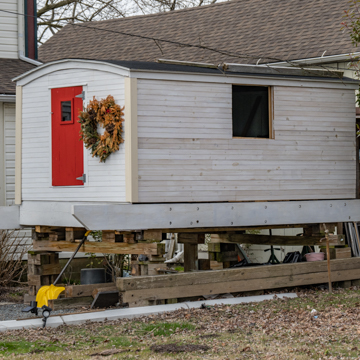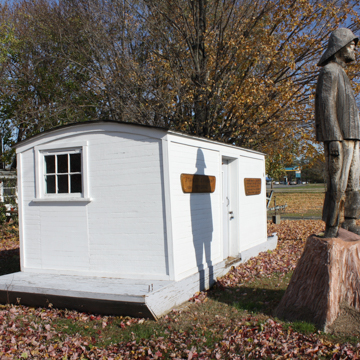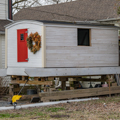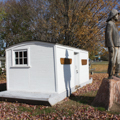This is a once-common boat type known as a fish shanty built by Chesapeake Bay watermen from the 1880s through the 1930s to provide rudimentary living accommodations and shelter from inclement weather. Before motorized vessels, watermen called upon to venture far from shore required an overnight stay. With a shanty, they could remain in a productive fishing area for the duration of a fish run or season. As typical of such boats, Carter’s shanty consists of a rectangular cabin of narrow, beaded, tongue-and-groove boards and barrel-vaulted roof and set on a flat skiff-like floating platform. Purely utilitarian in nature, these shanties were built from inexpensive materials and varying specifications. As boat motors became readily available and more powerful, shanties were no longer needed. Some were adapted for use as sheds or appendages to waterfront cottages, but most have fallen victim to decay. Captain Carter’s Fishing Shanty was restored by celebrated Eastern Shore waterman and boatwright Stanley F. Vansant, whose wood statue now appears alongside it.
You are here
CAPTAIN CARTER’S FISHING SHANTY
If SAH Archipedia has been useful to you, please consider supporting it.
SAH Archipedia tells the story of the United States through its buildings, landscapes, and cities. This freely available resource empowers the public with authoritative knowledge that deepens their understanding and appreciation of the built environment. But the Society of Architectural Historians, which created SAH Archipedia with University of Virginia Press, needs your support to maintain the high-caliber research, writing, photography, cartography, editing, design, and programming that make SAH Archipedia a trusted online resource available to all who value the history of place, heritage tourism, and learning.


















